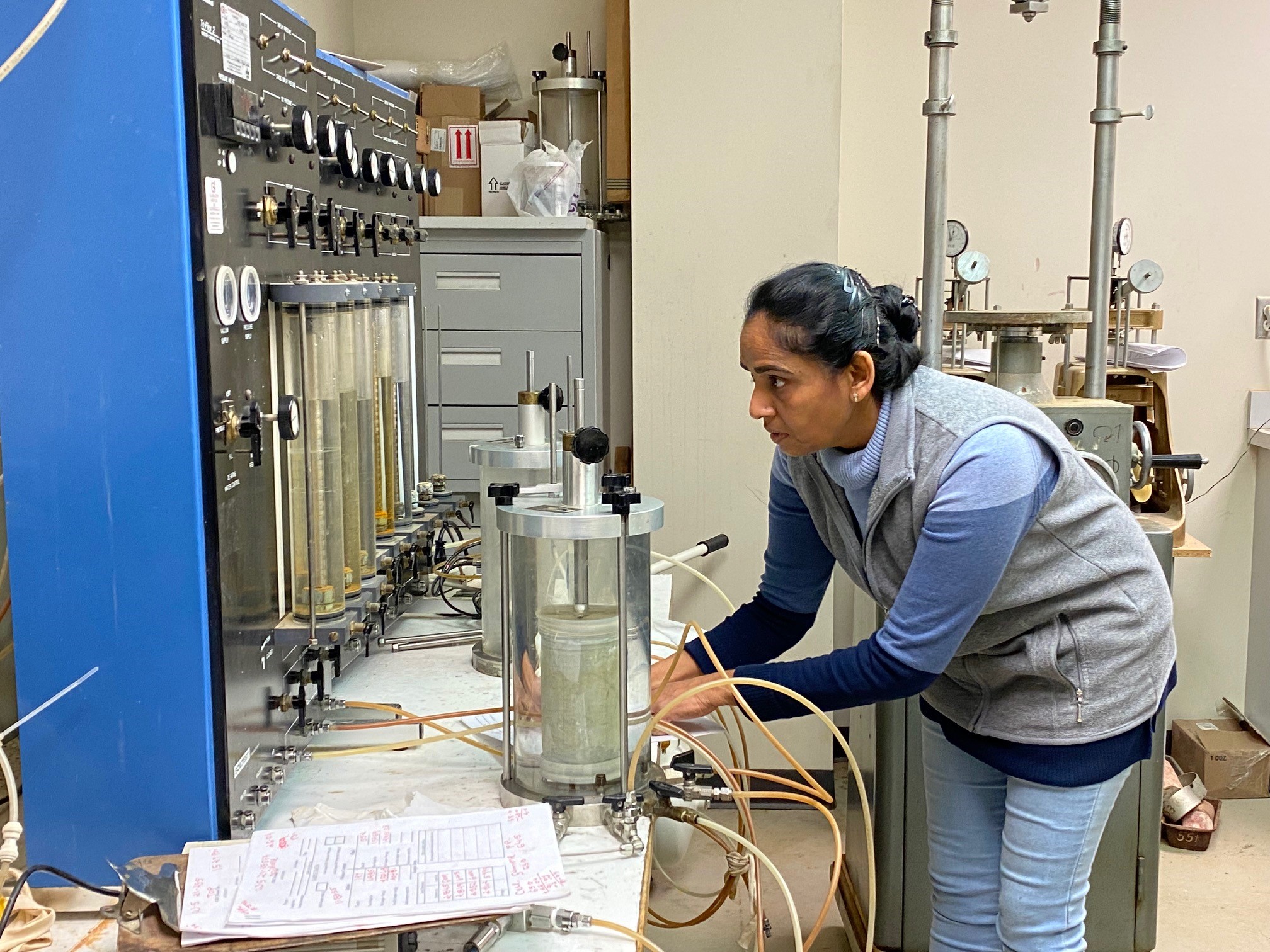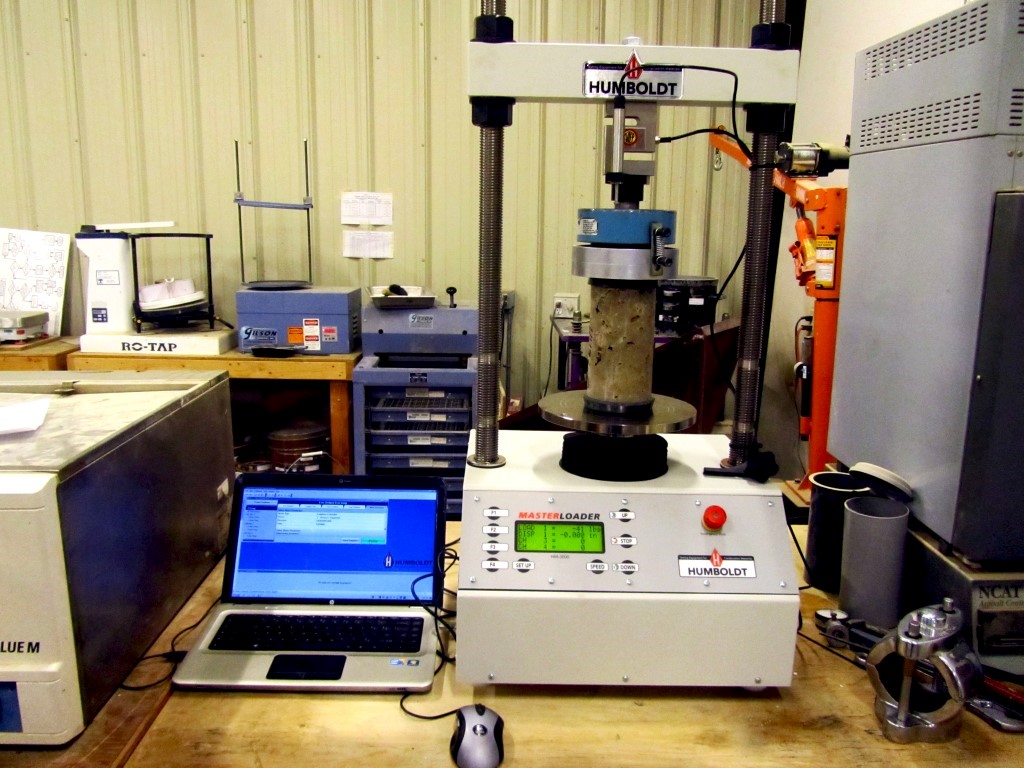Quality Assurance Unleashed: Material Testing Lab for Project Honesty
Quality Assurance Unleashed: Material Testing Lab for Project Honesty
Blog Article
Innovations in Product Testing for Boosted Quality Control
From non-destructive testing methods to automated systems, the field of material screening has seen impressive advancements. In this conversation, we will certainly explore some of the latest trends in material testing, consisting of the usage of innovative sensor innovations, the combination of information analytics, and the function of fabricated intelligence. Let's dive into the world of innovations in material testing and find exactly how these technologies are shaping the future of top quality assurance.
Non-Destructive Evaluating Approaches
Non-Destructive Screening Approaches play an important duty in guaranteeing the honesty and quality of products without endangering their structural honesty. These methods are utilized in various markets, including construction, manufacturing, and aerospace, to discover and recognize flaws or anomalies in materials or frameworks. By utilizing non-destructive screening methods, specialists and engineers can assess the properties, features, and performance of products without triggering any type of damage.
One commonly utilized non-destructive testing technique is ultrasonic screening (UT) UT includes making use of high-frequency audio waves to find defects such as cracks, gaps, and additions in materials. This method functions by transmitting ultrasonic waves right into the material and evaluating the shown waves to identify the presence and place of any type of irregularities. UT is especially effective for checking welds, pipes, and various other structures made of metal or composite products.

Non-destructive testing techniques give valuable information about the quality and dependability of materials, ensuring that they meet the needed requirements and requirements. By carrying out these strategies, sectors can boost their quality guarantee procedures, minimize the danger of failure or mishaps, and eventually provide safer and more reputable products to consumers.

Automated Screening Equipments
Automated screening systems have actually reinvented the area of material testing, offering effective and exact methods for examining the top quality and honesty of materials. These systems utilize advanced technologies and algorithms to automate the testing procedure, reducing human error and raising efficiency.
One key benefit of automated testing systems is their capacity to execute examinations at a much faster rate than hands-on screening approaches. With making use of robotics and sophisticated software program, these systems can carry out multiple examinations all at once, significantly reducing the moment required for screening big batches of products.
Additionally, automated screening systems use a higher degree of precision and precision compared to hand-operated testing. They can perform examinations with constant parameters, making certain that the outcomes obtained are reliable and reproducible. By removing human subjectivity and irregularity, these systems supply a much more objective assessment of material high quality.
In addition, these systems are outfitted with innovative sensing units and detectors that can find also the smallest defects or discrepancies in material properties. This enables very early detection of prospective issues, permitting makers to take restorative activities before the products are used in essential applications.
Along with their performance and precision, automated testing systems likewise boost security in product screening. By lessening human participation in potentially dangerous testing treatments, these systems lower the risk of injuries and mishaps, making certain a safer working environment.
Advanced Sensor Technologies
With the combination of innovative sensor innovations, material screening systems have attained even higher degrees of accuracy and performance (material testing lab). Advanced sensing unit modern technologies play an important function in improving the quality control process by giving accurate and real-time information throughout product screening. These sensors are capable of finding and gauging different physical residential or commercial properties such as temperature, pressure, pressure, and resonance, allowing for a comprehensive analysis of the product's actions under different conditions
One of the vital innovations in sensing unit innovations is the advancement of wireless sensing units. These sensing units remove the requirement for troublesome wiring and enable smooth data transfer, enhancing the overall adaptability and flexibility of the screening procedure. Furthermore, wireless sensors can be easily integrated into existing product screening systems, making them an economical solution for boosting and updating testing abilities.

Expert System in Material Screening
Expert system has transformed the field of material testing, bringing unmatched levels of accuracy, performance, and predictive capacities to the quality control procedure. With the ability to examine large quantities of information and identify patterns that may go undetected by human drivers, AI formulas have considerably boosted the reliability of product screening procedures.
One of the key advantages of making use of AI in product screening is its ability to anticipate product behavior under various problems. By training AI models on historical data, researchers can establish predictive designs that can approximate the efficiency of materials in real-world situations. This enables makers to enhance product choice and style, lowering the demand for pricey and taxing experimental procedures.
Additionally, AI can automate and improve the material screening procedure, boosting effectiveness and minimizing human error (material testing lab). AI-powered systems can autonomously accomplish screening procedures, gather and examine data, and produce extensive reports. This not only conserves time however likewise makes certain regular and reliable outcomes
In addition, AI can find and examine worldly problems or anomalies with high accuracy. By contrasting test results to predefined requirements, AI algorithms can promptly determine discrepancies and alert drivers to prospective issues. This very early discovery of flaws helps protect against faulty products from going into the production procedure, inevitably boosting item high quality and customer complete satisfaction.
Integration of Data Analytics
Data analytics plays a vital role in the integration of material screening procedures, enabling manufacturers to remove useful understandings and make educated decisions. By using straight from the source sophisticated analytic strategies, manufacturers can assess large quantities of information see page collected throughout product testing to determine patterns, fads, and abnormalities that might impact the high quality and efficiency of their items.
Integration of information analytics in product testing allows makers to keep track of and examine numerous parameters and variables throughout the screening procedure. This includes aspects such as temperature level, pressure, stress, and various other ecological problems that can impact the actions and characteristics of materials. By examining this information, suppliers can gain a deeper understanding of exactly how various variables influence the performance and communicate of their materials.
Moreover, information analytics assists in recognizing possible defects or weak try this website points in products, allowing makers to take aggressive actions to address these issues before they lead to item failings or safety hazards. This proactive method can dramatically boost the total quality control process and improve client satisfaction.
Along with recognizing issues, information analytics can likewise enhance material screening treatments by determining areas of improvement and suggesting alterations in the screening procedures. By assessing historic data, producers can identify patterns and fads that can aid them enhance their testing processes, reduce prices, and enhance efficiency.
Verdict
Non-destructive screening approaches, automated screening systems, advanced sensor modern technologies, and the combination of data analytics have all played a significant duty in enhancing the precision and effectiveness of material screening processes. Furthermore, the application of synthetic knowledge in material screening has further added to the advancement of more accurate and trusted testing strategies.
From non-destructive testing strategies to automated systems, the field of material screening has seen exceptional developments. Cordless sensing units can be easily incorporated right into existing material testing systems, making them an affordable remedy for upgrading and improving screening abilities.
Assimilation of data analytics in material screening permits producers to keep an eye on and review different specifications and variables throughout the screening process. Non-destructive testing techniques, automated testing systems, progressed sensor innovations, and the integration of data analytics have all played a significant role in enhancing the accuracy and performance of material testing procedures. Furthermore, the application of man-made knowledge in product screening has actually further contributed to the development of more dependable and accurate testing methods.
Report this page